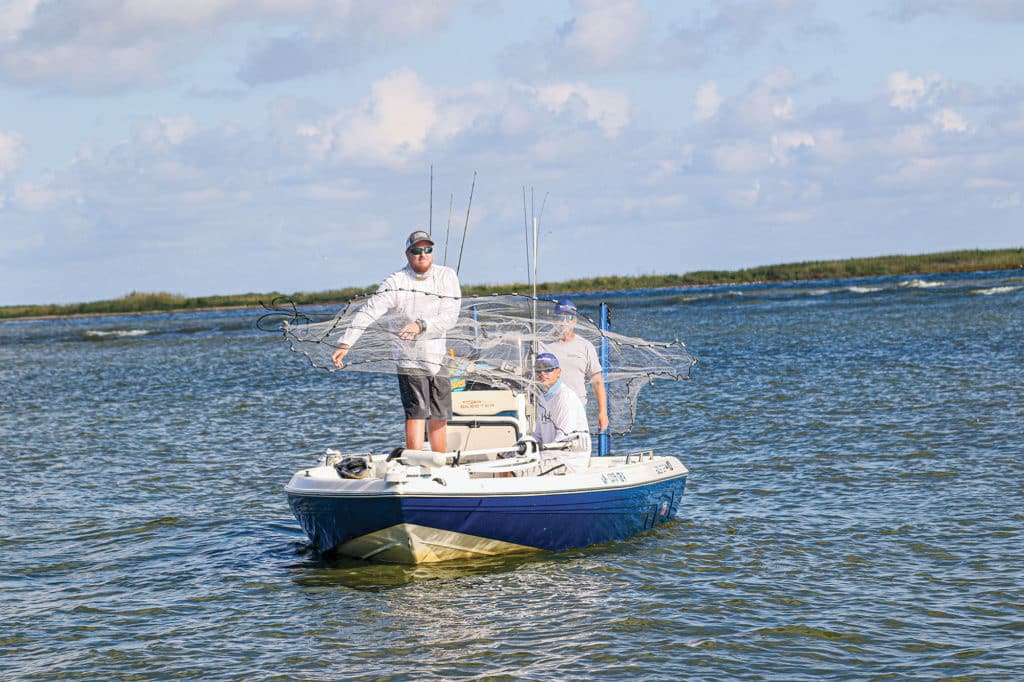
You can choose to believe or to doubt that whole elephants-eating-peanuts cliche, but here’s one you can take to the bank: Many Gulf of Mexico predators will eagerly gobble a tasty little treat known as the peanut pogy.
Found from Florida to Texas, with particular concentrations in the northern Gulf of Mexico, peanuts are the juvenile stage of the Gulf menhaden (aka pogy), which is well-known for its kingfish, tarpon and shark appeal. What peanuts lack in size, they more than compensate with abundance, accessibility and presentation diversity.
A great bait option for a wide range of coastal and offshore species, peanut pogies carry a thick, smelly slime coating that nimble-nosed predators won’t miss. Tough and active, these little stinkers put on a show with an undeniable blend of bite-tempting attractions.
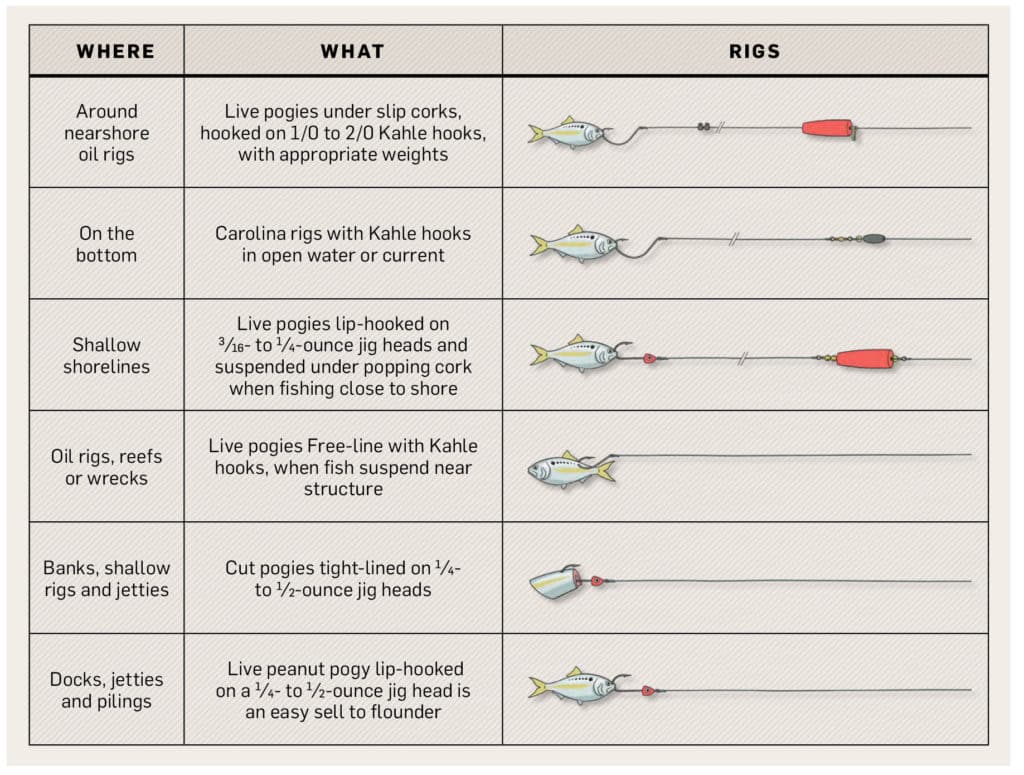
“Pogies are generally quite hardy baits,” says Capt. Anthony Randazzo of Paradise Plus Lodge, just north of Venice, Louisiana. “They are easy to keep alive, and they swim actively when cast into the fishing hole. The pogy’s distinctive scent attracts fish instantly, while their signature silver flash is visible from a distance.”
How To Find ’Em
Capt. Ross Montet of Cajun Fishing Adventures finds peanut pogies from the outer edges of coastal marshes to the nearshore waters. While grown pogies favor deeper areas or beaches facing the open Gulf, juveniles typically hold in shallower water, often near the mouths of bayous and smaller passes.
“Tides will pull them in and out [of coastal arteries], so where you find the peanuts isn’t necessarily related to a growth phase,” Montet says. “I’ve found them over oyster bottoms, sand bottoms and muddy bottoms. They’re probably just following their food source, which is mostly microorganisms.”
Pogies of all sizes are known for a distinctive surface flip, so listen closely when rounding up the day’s bait (see “Peanut Harvest”). Randazzo also notes the visual clues.
“We can usually spot pelicans, gulls and terns diving on or near the schools of pogies,” he says. “When the schools are dense, the pogies will be apparent on the surface of the water, even without bird activity. Lastly, pogies usually travel in large schools easily located on modern sonar units.”
Rig ’Em Right
Peanut pogy applications range from skiff and bay-boat waters to the deeper zones where center-consoles operate. Opportunities include:
Pelagics
Offshore, Mike Frennette of Venice, Louisiana-based Redfish Lodge is quick to free-line live peanuts on 5/0 circle hooks when he spots dolphin buzzing through the area. Hooking his baits in the dorsal makes them swim away from the boat for more visibility and vulnerability.
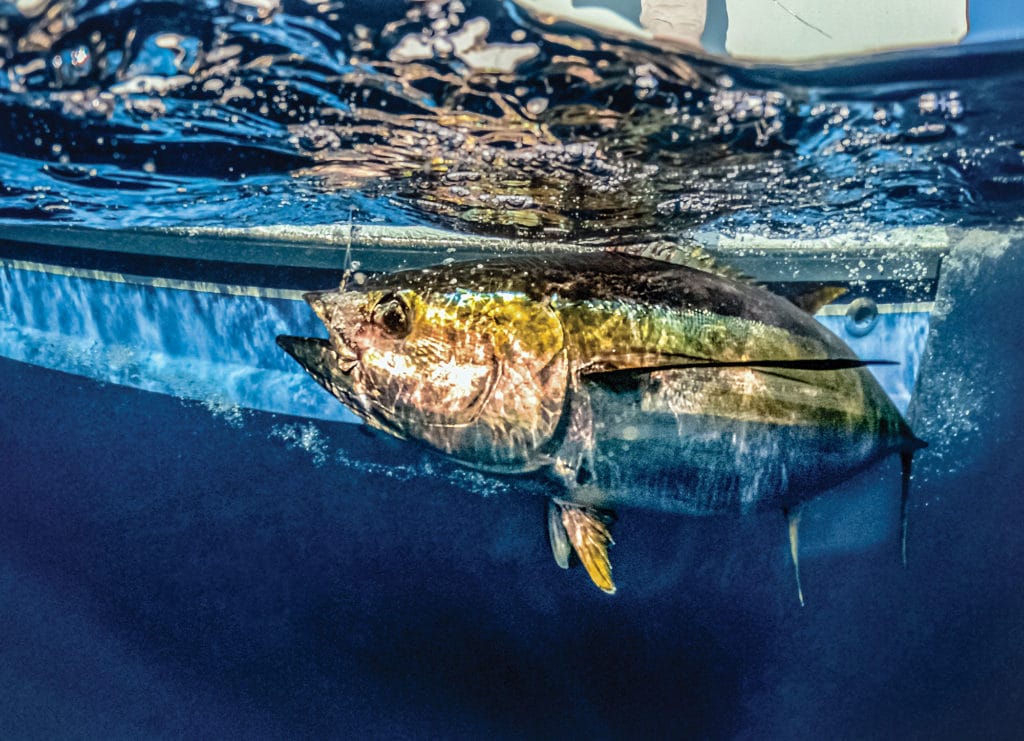
Tuna munch on the little pogies like M&M’s, but they tend to be boat-shy. Rigging his baits on 5/0 circle hooks for blackfins or 6/0 for yellowfins, Frennette ensures effective positioning by adding 2- to 4-ounce weights if the current strength prevents his baits from swimming deep enough.
For tuna and dolphin, 7-foot heavy-action spinning outfits stand up to stout fish, while 50-pound braided line with 40-pound fluorocarbon leaders aid castability.
Snapper
As far as dependability, and often with nearly nonstop action, fishing peanut pogies for the mangrove snapper patrolling offshore drilling structures is hard to beat. Doing most of his snapper work in the 50- to 200-foot range, Montet favors dormant rigs because he doesn’t have to worry about crew boats blowing out the spot and killing his bite. Also, rigs with crew quarters see daily chumming from table scraps, and that ensures loads of forage and hungry snapper.
Montet nose-hooks live peanuts on a 3/0 to 4/0 Mustad circle hook so they’ll swim down to the snapper zone. Active fish will come to the fresh meal, but if a slow current has them lethargic, the sudden appearance of a frisky baitfish usually flips the switch.
Cut pogies also work, but Montet stresses the importance of hiding the hook for this inanimate presentation. With a center chunk, he’ll run his hook through the corner and then reinsert the point into the opposite side. For tail pieces, Montet runs the hook through the vent and out the cut end, and then turns it back into the bait chunk.
Noting that he catches snapper from the surface to about 40 feet down, Montet says he’ll start by free-lining cut pogies, but if a stiff current blows his bait off target, he’ll add split shots one at a time until he determines the right fall rate. Another option: Impale a peanut pogy chunk on a 1/4- to 1/2-ounce bucktail jig.
Get ’Em Going
Frennette advises gathering at least twice as many peanut pogies as you’ll likely use for bait because these smelly baitfish make excellent chum. Cut into thirds, or even diced into dime-size chunks, pogy chunks drift like sparkling diamonds and create an oily slick that lasts long after someone gobbles the appetizers.
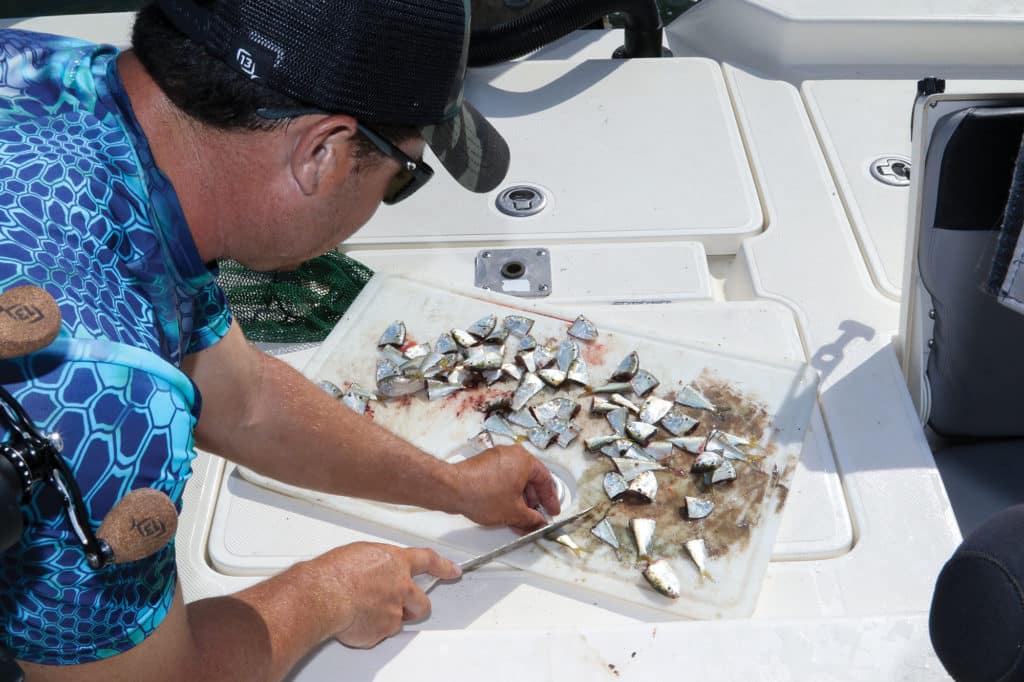
Targeting tuna, Frennette knows he can usually get the footballs fired up by live-chumming with handfuls of peanut pogies. He’ll scatter the freebies down-current and wait for the tuna to follow the snacks into his spread, but if a hot bite fizzles, serving another round of chummers often reignites interest.
This strategy works well when you spot an idle shrimp boat. When crews take a break from pulling and culling, the boat will often hold a pile of fish still salivating from the recent bycatch dump, and that lingering scent entices passersby to swing close for a look. Position up-current of the boat, toss out a serving of live or cut peanuts, and set your spread. Just like drawing fish off a reef, anyone with an appetite will follow the chum and pounce on your hooked baits.
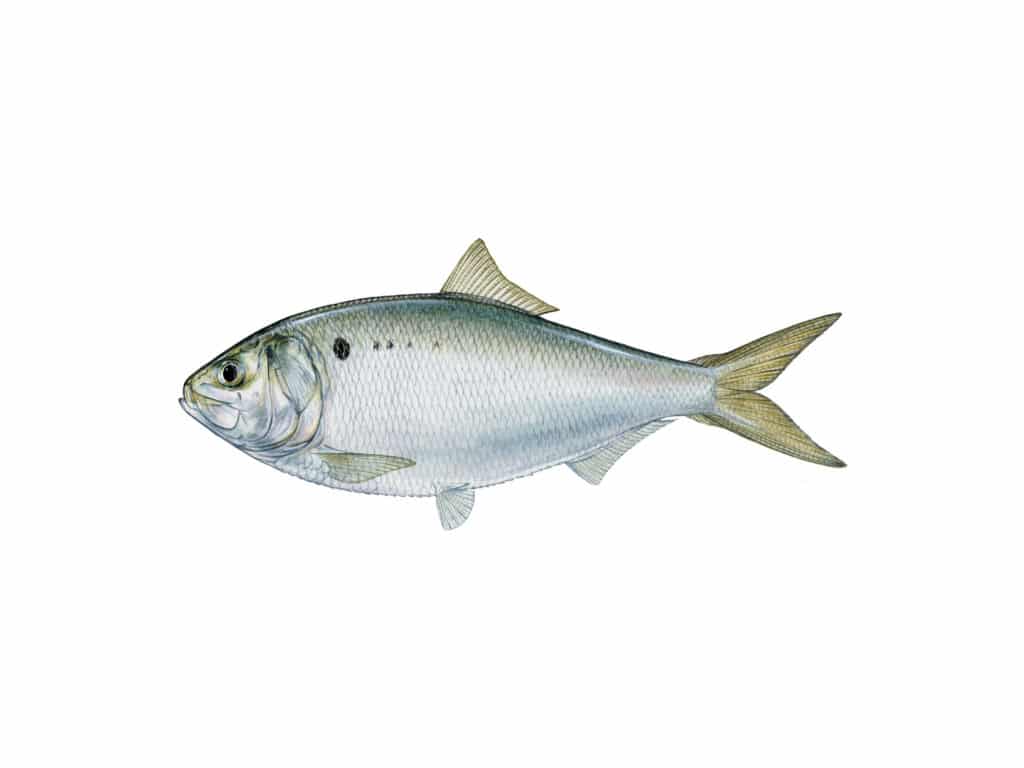
Peanut Harvest
Pogies rarely respond to sabiki rigs, so cast-netting is your best option. Just know that these fleet-footed baitfish can be nervous and easily spooked, especially in shallow water. It’s often a cat-and-mouse kinda deal, so stay alert and ready to act.
Start in deeper areas and work inward, with the net man on the bow, and everyone scanning and listening. Go with the wind as much as possible because this minimizes bait-spooking hull slap. Also, throwing into the wind can stall a small net—Louisiana limits recreational anglers to 8-foot cast nets—and allow the pogies to scoot out of the drop zone.
Notwithstanding their durable nature, dropping pogies onto a boat deck shortens their shelf life and knocks away some of that smelly slime. To avoid bruising your baits, drop them into a laundry basket or, better yet, a plastic bin filled with seawater. This provides easier, safer collection and efficient transfer to the livewell.









